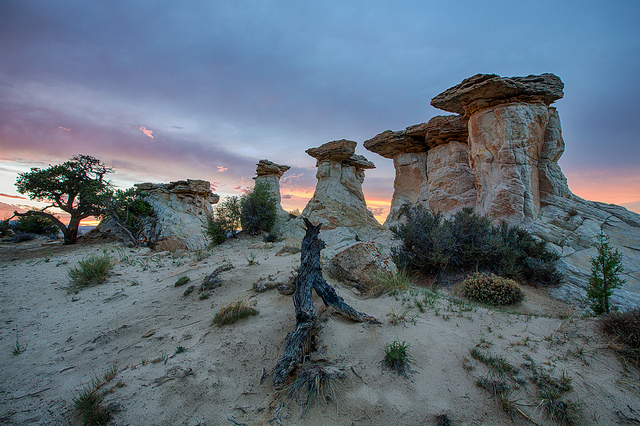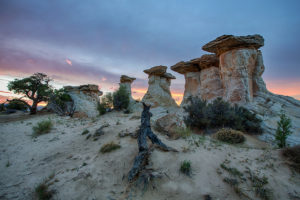I moved across the country to Utah when I was 23. I went from the rolling hills and farmland of upstate New York to the rugged snow-capped mountains and deep red canyons of Utah’s public lands. Within a month I found myself rafting down the San Juan River in the Southeast corner of the state surveying for bird habitat. The land to the north managed by the Bureau of Land Management and to the south, Tribal land. As we floated along to each new survey site I would get lost daydreaming of the ancient civilizations that had called the area home and left remnants of their life behind. In the corner of an arch there was a dwelling with shards of pottery littering the ground, on a bluff jutting high out of the river, footholds were chiseled into the sandstone climbing to the plateau above, and pictographs were hidden just a short walk from the river behind the walls of tamarisk growing on the bank. The cultural and archaeological significance of the area was astounding. Everything I experienced as I floated down the river teetered on the edge of protection, the San Juan river borders the southern edge of Bears Ears National Monument.
On Monday, Trump stood in Salt Lake City and announced his plan to slash two national monuments in Utah by nearly 2 million acres; Grand Staircase-Escalante and Bears Ears. These places that filled my mind and soul stand to lose the protections for which, so many people fought and collaborated.
I now work out of Western North Carolina on public lands, specifically in federally designated Wilderness. The areas I work in have a multitude of protections that support the clean water, forests, archaeological sites and trails for which, the Southern Appalachians are known. There are old growth poplar trees growing deep in the forest, trails leading to views of the iconic smoky mountains and sacred native burial grounds. I have hiked deep into the Wilderness and found a rusted stove, sitting in an abandoned Civilian Conservation Corps camp and can imagine the young men, away from home, working and thriving in this thick green palace. These places are a part of our history and luckily, the designation of federal wilderness areas is an Act of Congress. A President cannot sign an order to eliminate the protections as Trump did with the National Monuments. Many of our public lands in the southeast are not federally designated wilderness though and the management focus of the lands can shift with each new presidential administration.
In my mind, the beauty of public land is, there are places for every type of user. I have worked on lands managed by the National Park Service (NPS), United States Forest Service(USFS) and the Bureau of Land Management(BLM) crossing paths with hunters, hikers, foragers, biologists, ranchers, students, horseback riders, loggers, mountain bikers, shepherds, fishermen, geologists, picnickers, off highway vehicles, archaeologists and native tribes. Each has a different reason for being out in our wild places but there are opportunities for all of us.
The current administration is not caring for all our people, or all our land. It’s focused on stripping the resource to benefit the here and now. The mission statements of the NPS, USFS, and BLM all end with “for current and future generations.” I think we have reason to be concerned at this current point in US history that future generations may not experience the ancient native dwellings in Utah or the smoky lines of the blue ridge mountains if Trump and his administration see public land only as an economic resource.


There are no comments
Add yours